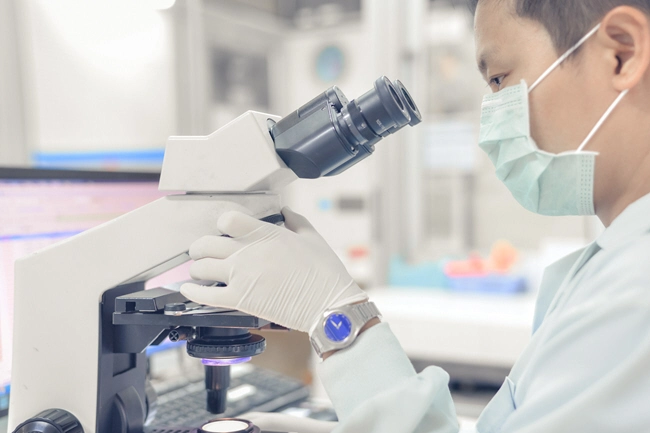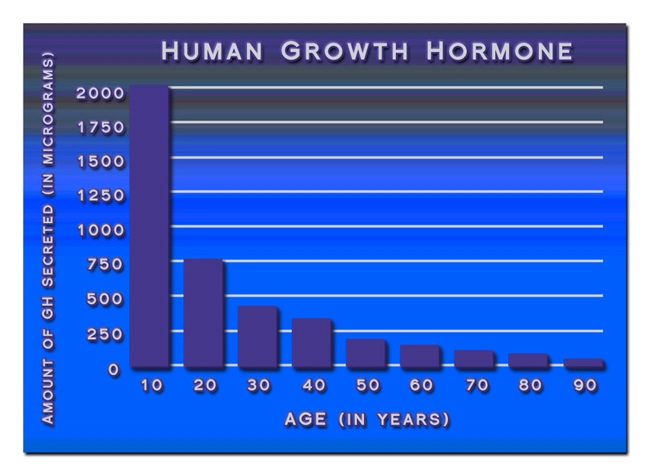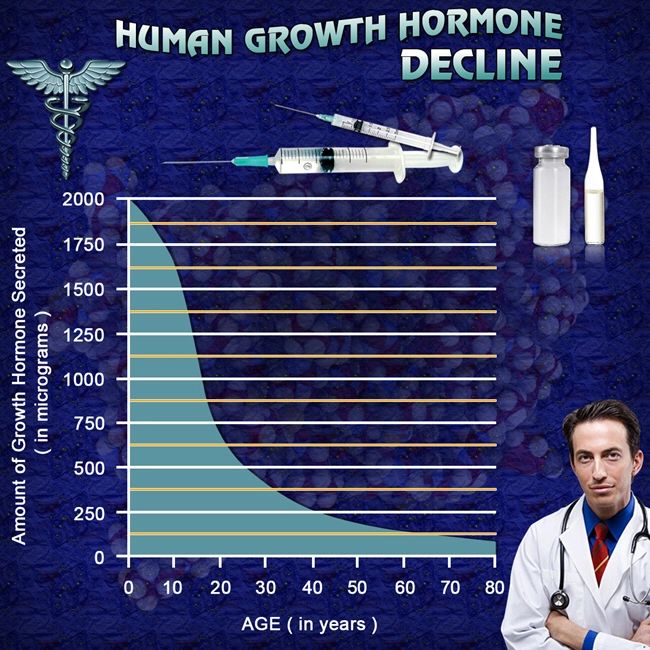
Hormone Replacement Therapy
Glossary of terminology
Adenosine Triphosphate (ATP): The primary building blocks of life used by the cells for them to operate and create reactions that can support life.
Adrenals: These are the glands that are known to produce hormones linked to stress. Some of the hormones produced include adrenaline, cortisol, and DHEA.
Adreno cortiotrophic Hormone (ACTH): This will facilitate the production of cortisol and DHEA through its interaction with the adrenal gland receptors. Released through the pituitary glands, this can signal specific cells in the adrenal glands using the cyclic AMP.
Advanced Glycosylation Endproduct: These are known to cross-link with glucose. When the AGE will stick to the capillaries and arteries, there will be an increased risk for kidney problems, blindness, and even heart problems. One can estimate its level through a blood test by verifying the level of glycosylated 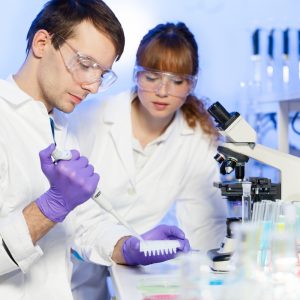 hemoglobin.
hemoglobin.
Aerobic Capacity: Considered as the capacity to produce oxygen. The levels produced
are influenced by the size of the capillary, rate of pumping in the heart, the capacity of the lungs, and also the rate at which oxygen is transferred from the red blood cells into some of the tissues of the body.
Aerobic Exercise: The intent of this exercise is to deliver the right amount of oxygen to the muscle cells without lactic acid build-up. This is recommended for persons who want to lower the levels of glucose and insulin.
Aging: The expected decline in the quality of the person's body as he ages.
Amino Acids: Recommended parts of the diet since protein is produced through these. There are eight important amino acids.
Amygdala: This is that part of the brain that comes up with emotions.
Anaerobic Exercise: As opposed to aerobic exercise, this will lead to the development of lactic acid. This will help facilitate the development of growth hormones and can also promote the synthesis of testosterone.
Anabolic steroids: These facilitate the development of muscles and lessen the effects of the virilization of testosterone.
Anti-aging Zone Lifestyle Pyramid: Through this, the four pillars of aging are reduced. These four pillars include insulin, blood glucose, cortisol, and free radicals. To make this happen the pyramid will include certain physical activities, zone diet, and meditation. Of the many components, the zone diet is considered the major component.
Arachidonic Acid: considered the immediate precursor to unhealthy eicosanoids. This fatty acid is normally found in organ meats, egg yolks, and even fatty red meat.
Autocrine Hormones: These are used to test the environment that surrounds a cell. A good example is the Eicosanoid.
Benign Prostatic Hypertrophy (BPH): considered as the normal enlargement of the prostate tissue of a man as he grows old. There are some instances when urinating will be made difficult because of this.
Binding Proteins: Binds with water-soluble hormones including sex hormones and cortisol. Also will bind naturally to insulin growth factors and in the process helps manage the right levels of hormones found in the person's bloodstream.
Biological Marker of Aging: These are the accepted physiological markers that appear in almost all persons who age.
Biological Response Modifier: Molecules that can change how the cells can respond to the environment around them.
Blood Glucose: The brain takes much of its energy from the blood glucose. If this is found to be at higher levels, it can lead to diabetes and aging takes on a faster rate.
Calcium Oxalate Kidney Stones: This is a type of stone that may develop in the person's kidneys. These stones cannot be dissolved easily and it will take an x-ray check for the doctor to confirm their presence.
Calorie Restriction: a way of reducing the calorie amount that can help in the maintenance of the right levels of essential fats and proteins. This can also offer the body the right amount of minerals and vitamins.
Corticotropin-Releasing Hormone (CRH): It is the main player in the production of ACTH. To produce this, it will need to interact with the pituitary gland. Traversed from the hypothalamus, this will use the cyclic AMP.
Cortisol: When there is stress or the level of blood glucose is low, cortisol is produced by the adrenal glands. If a person is stressed, the body will stop the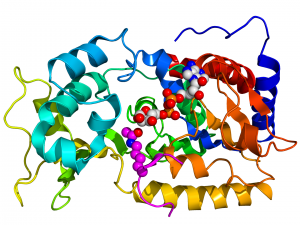 synthesis of eicosanoids.
synthesis of eicosanoids.
CyclicAMP: Commonly referred to as the second messenger used to start off a number of biological procedures. This is known to be sourced from ATP. The endocrine hormones are known to use this.
CyclicGMP: Considered as the secondary hormone that can help jumpstart biological procedures started by the hormone. This is induced by the nitric oxide compound.
Dehydroepiandrosterone (DHEA): This helps to prevent cortisol from binding in the body. Another form of steroid hormone is sourced from the glands named adrenal glands.
Diabetes: This develops when the production of the blood-glucose cannot be controlled. There are two types, Type I and II. For Type 1, there is no insulin production. For Type II, there is an overproduction of (insulin).
Dopamine: A neurotransmitter that operates with serotonin.
Eicosanoid: Produced from every cell of the body, this is made from polyunsaturated fat and 20 carbon compound atom. This is regularly produced by each cell of the body in order to test the surrounding environment. Also, Goodeicosanoids produce AMP.
Endocrine Hormones: These are usually found in the gland that is a discrete gland and moves on the blood stream to reach body tissues.
Endocrinology: The science of hormones and how hormones and biological procedures operate.
Endocytosis: A process wherein the extracellular molecules will join a cell in the body.
Endothelial Cells: These can be found on the system called vascular system and serve as a barrier between cells and the bloodstream. Hormones are expected to pass through the barriers to get to the receptors to start the biological processes.
B-Endorphin: Its release from the pituitary gland will help alleviate the pain. To release the B-lipotropin, the cyclic AMP is needed.
Essential Fatty Acids: Essential fatty acids should be an element of the daily diet since the body cannot produce these naturally. Two fatty acids that are important to include are the omega-3 and the omega-6 which can help produce eicosanoids compounds.
Erectile Dysfunction (ED): Simply called ED, this is the lack of ability of the male to sustain an erect penis during sexual intercourse.
Estrogens: These are the three groups of steroid hormones to carry the female attributes and to manage fertilization. These are stimulated by the hormone named follicle-stimulating and also make use of cyclic AMP.
Exocytosis: The procedure in which intracellular chemicals are freed.
Follicle-Stimulating Hormone (FSH): Once traversed from the gland named pituitary this will help in the production of estrogens and sperms. This makes use of the cyclic AMP.
Free Radical: When a molecule contains the unpaired electron then it's called a free radical. This can act on other bio-molecules to form free radicals more.
Functionality: It is the capability to live without assistance.
Gland: This is where your hormones are secreted. There are different glands that are found in different parts of the body including the brain, in the area of the throat, in the person's midsection and one can be found in the area of the gonad. The gland for females is the ovary and the testes for the male.
Glucagon: This helps in the restoration of blood glucose levels. This is sourced from the areas of the pancreas and acts on the carbohydrates found in the liver. To start its biological process this will need the cyclic AMP.
Glucose: It is the simple carbohydrate flowing in the person's blood stream and also is the major fuel for the brain. This is also in the muscles and liver as your glycogen compound.
Glucose Tolerance: This will refer to the capacity of the liver and muscle cells to take out glucose from the bloodstream. It is expected that the tolerance will eventually decrease as the person ages.
Glycemic Index: Used as a measure to tell how fast the carbohydrate will join the blood stream in the form of glucose. Not all carbohydrates can join the blood stream at similar rates. For example, table sugar is known to join the blood stream slower if you compare it to other carbohydrates like potatoes and rice. A higher glycemic index means that the carbohydrate will join the blood stream at a faster rate and this will mean an increase in the level of insulin. A lower glycemic index can be linked to fruits and vegetables.
Glycogen: Glucose in its stored form. The liver is the source of glycogen that could be used for managing the levels of glucose in the body.
Glycosylated Hemoglobin: This is the management of the blood glucose which will depend on the percentage of hemoglobin that is carbohydrate-modified that can be found in the blood cells that are red. Glycosylated Hemoglobin in higher levels will mean that control of the blood glucose will be at its worst.
Growth Hormone: This will help release the fatty acids and help in the production of insulin-related growth hormones. To help release the fatty acids, it needs to be moved from the pituitary gland and should act with fat cells.
Growth Hormone-Releasing Hormone (GHRH): This will cause the emission of the growth hormone of the pituitary gland. Released from the hypothalamus, this will need the cyclic structured AMP as its secondary messenger.
Hematuria: A condition wherein red-colored blood cells can be found in the urine. This is linked to a number of diseases and conditions including kidney stones, kidney disease, urinary tract cancer, and even UTIs. Tests like x-ray and CT scans are normally used to check the condition.
High-Density Lipoprotein (HDL): Considered as healthy cholesterol that allows the lipid-like cholesterol to be moved to the water-based blood stream and taken it out from the cells. The level of HDL will normally go down when insulin is up.
Hippocampus: A major component of the brain that belongs to the limbic system and plays an important role in integrating incoming nerve impulsion to the area of the hypothalamus. It is the main memory center too or storage area of the brain.
Hormones: Compounds that send out messages and information. There are specific receptors required for the hormones for the beginning of their biological processes and use secondary messengers to start the cellular process, which depends on the same data.
Hormonal therapy: One of the major therapeutic methods of medical treatment for cancer. This therapy is regarding the matter that cells of prostate cancer frequently use male hormones (like testosterone) using as fertilizer as well as the deficiency of testosterone turns into the elimination (apoptosis) of some cells of prostate cancer. Consequently, the use of hormonal therapy helps many patients having untreatable prostate cancer, especially in Stage D and late Stage C of improving their superiority of life and extending their lives.
Hormone Releasing Factors: These are hormones whose main purpose is to control the emission of the other hormones secreted by the hypothalamus into the blood stream that directly affect the pituitary. Cyclic AMP is used as their second messengers by many hormone-releasing factors.
Hyperinsulinemia: This is a condition where there are excessive levels of moving insulin in the blood. This is generally a result of resistance of insulin where the cells are unresponsive to the insulin that lowers or decreases the levels of blood glucose.
Hypothalamus: A part of the brain structure that contains a number of small nuclei that synthesizes and acts on information and manages the discharge of some hormones that push the pituitary to send out hormones.
Incontinence: This is referred to as uncontrollable urination. This normally happens in babies but in time they can control the urge to urinate. Different people will experience different kinds of pain and inconvenience but the good news is that this issue can be well-treated.
Insulin: It is a hormone that is central to regulating and incoming driving nutrients to the cells for storage in the body. Aging is also linked to insulin.
Insulin-like Growth Factor (IGF): These are polypeptides or hormones discharged from the liver in reaction to the growth hormone. It is IGF-1 which is a hormone mainly secreted by the liver as a result of stimulation by growth hormone that is responsible for normal physiology and building muscle.
Insulin Resistance: It is a condition, briefly said physiological condition when the cells are no longer responding appropriately to insulin. Natural insulin loses efficiency at lowering the blood sugars in which the body emits more insulin to the bloodstream.
efficiency at lowering the blood sugars in which the body emits more insulin to the bloodstream.
Impotence: A sexual dysfunction in which a man cannot maintain an erection of his penis that can formalize a sexual engagement. Factors that cause this condition can be stress with psychological factors; though, it is reported that this sexual problem is primarily linked to a number of health problems including heart problems and issues.
Interstitial Space: It is the space that is between endothelial and target cells.
Intravenous Pyelogram (IVP): This is a procedure where dye of iodine is introduced into the many veins of the arms. The dye travels through the body and is absorbed well by kidneys and goes out into the bladder. The x-ray test could identify abnormalities of the urinary tract like tumors of the kidney, bladder, and ureter. Kidney stones may be diagnosed by this procedure as well.
Lean Body Mass: Total fat-free mass or body weight of the body. Lean body mass has all its components like water, collagen, bones, and muscle except neutral storage lipid.
Life Expectancy: It is the average longevity of life or age when 50% of newborn babies will live.
Limbic System: An area in the brain tasked with the more primitive reactions and also facilitates biological homeostasis.
Longevity: The duration or part of maximum life expectancy that a case of the organism will occur before death.
Luteinizing hormone (LH): Hormone that is essential in reproduction. It is secreted from the pituitary, which is the cause of stimulation of the production of testosterone (males) and the production of progesterone (females). Its second-ranked messenger is the cyclic AMP.
Kidney Stones: These are tiny crystals formed in the tubal system of the kidney. These crystals meet and cling together to create a larger solid mass. It grows in the kidneys and after that moves in the path of the urinary tract. These can also grow in the bladder. In many cases, stone production can be linked to a urinary blockage that is chronic in nature or infection, or various protein starvation normal in developing countries. Stones can also grow in the prostrate due to infection. There are different kinds of stones that develop in people and the most popular is the calcium oxalate. The problem with these stones is that they cannot be seen by the eye.
Macronutrients: Top examples of this are carbohydrates, fats, and proteins. This offers most of the energy that can help come up with hormone responses.
Maximum Life Span: This is the longest time that an organism is expected to live.
Melatonin: Considered as an antioxidant and released by the gland named pineal. This is also known to control and manage circadian rhythms and other biological procedures.
Micronutrient: Highly recommended for humans in order to facilitate a number of biological processes. Some top examples include minerals and vitamins that will not have an impact on hormonal responses.
Mortality Doubling Time: Time amount that may be required because of the rate of death to grow two-fold after reaching adult age.
Nitric Oxide: Called nitrogen monoxide, this will help produce cyclic GMP that can help relax the smooth muscle tissues. This is also called a specimen of free radical and prohormone.
Omega-3 Fatty Acids: Can be sourced from fishes of cold water or from fish oils. It is said that these fatty acids are best for the heart.
Omega-6 Fatty Acids: Another example of fatty acids (polyunsaturated)that can be sourced from seed oils or vegetables. Both bad and good eicosanoids can be sourced from this type of fatty acid.
Penile Prosthesis: This is an implant that is inserted into chambers of the penis as a way to address the Peyronie's Disease. The patient doesn't need to stay long in the hospital.
Percentage Body Fat: The amount of fat in relation to the whole body weight. If the percentage of body fat is considered high then there's a higher risk for certain diseases like diabetes and heart diseases.
Peyronie's Disease: This will happen if there's a sustained injury in the wall of the penile chamber or may happen for no reason at all. The issue if left unattended can deform the penis which can result in bending. The scar that can be formed in a PD can shorten the size or may help prevent future erections.
Pineal: This is the part of the brain that acts and produces melatonin.
Pituitary: This is the main gland that releases most of the hormones into the person's bloodstream. Some of the hormones that are released by this gland include the ACTH, B-lipocortin, growth hormone, FSH, and soon.
Priapism: This happens when the erection goes for a long period of time and will not naturally end. This is linked to a penis injection therapy where the stiffness can happen for the next four hours. Also, experts say that this is linked to sickle cell anemia and may also occur after a person takes Trazodone.
Progesterone: This is generated to respond to the production of luteinizing hormone(LH) that comes from the pituitary gland. This is the hormone that will flush out the person's uterus once the egg is not fertilized. Also used for helping grow the new bone mass.
Progestins: These will take the characteristics of the natural progesterone.
PSA blood test: This will stand for Prostatic Specific Antigen and used to validate prostate cancer. Once elevated, then it's one indication of cancer.
Prostate gland: The small gland that is located at the base of the person's bladder. The nutrients that are produced here are used to support the growth of the sperm. The prostate gland may enlarge as the person grows old and may cause difficulty in urination and may even lead to prostate cancer.
Prostatitis: This is a common problem of the prostate gland that may be experienced by a man at any point in his life. The disease can be chronic, allergic, and acute and sometimes it has been reported that this can be psychosomatic as well. Though this condition is not life-threatening, still the feeling is unpleasant to the person. Do keep in mind that prostate cancer and this condition are not one and the same. Also, this condition will not lead to cancer. You will find three general types of this condition called bacterial prostatitis, non-bacterial or inflammatory prostatitis, and chronic pain in the prostate as a type of non-bacterial prostatitis.
the person. Do keep in mind that prostate cancer and this condition are not one and the same. Also, this condition will not lead to cancer. You will find three general types of this condition called bacterial prostatitis, non-bacterial or inflammatory prostatitis, and chronic pain in the prostate as a type of non-bacterial prostatitis.
Receptor: This identifies a unique hormone. The moment a hormone binds with this, information carried by the hormone can start a biological process.
SecondMessenger: These are the molecules that will help start a number of biological processes of the hormones.
Semen Analysis: This will refer to the testing of the sperm and seminal fluid. This is the kind of test where the amount of sperm is checked, the acidity, and its volume. Also, through this test, the infection will be verified.
Seminal Vesicles: These are the seminal vesical sacks found just behind the prostate that will all the fluids generated by the gland. The fluid is the same seminal fluid ejected by the male when he becomes sexually engaged. This is the same fluid that will nourish the sperm.
Serotonin: This will help filter out information. If the level of the neurotransmitter is low, then this will cause violence or depression in the person.
Struvite Kidney Stones: All stones are formed from different kinds of molecules. Examples are the Struvite Kidney Stones that are usually linked to urinary infection and the main signs that are checked in persons with UTI or urinary tract infection. These stones are only visible through the x-ray. During its early stages of development, the bladder symptoms may be observed and the development of these stones will not be checked thus may destroy the kidneys in the process.
Telomer: A part of the nuclear DNA that comes shorter when the DNA replicates. Once a certain length of the segment has been reached, the DNA will no longer replicate.
Testosterone: This helps in the buildup of libido for both men and women and can also help in the build-up of muscle mass.
Thymus: The main producer of the T-lymphocytes, examples of white cells that can help build the immune capability of the body. This gland may be affected by an excessive amount of cortisol.
Thyroid: Found on the throat, the gland acts on the thyroid hormones which in turn influence the person's metabolism.
Thyroid-releasing hormone (TRH): This will instruct the pituitary gland to come up with TSH.
Thyroid-stimulating hormone (TSH): This is the hormone that helps the thyroid gland come up with T4. To synthesize the T4, the AMP will be used as the secondary cyclic AMP.
TransRectal Ultrasound (TRUS): This is a special type of test wherein a probe will be used including the rectum in order to generate ultrasound pictures of the prostate gland. This test is not as reliable as the Prostatic Specific Antigen. This is non-diagnostic though this can help in directing biopsies. Through this test, the attending doctors can learn more about the shape and size of the prostate and verify if cancer has spread. But this is not normally used to verify if indeed the cancer is already present. This is done as a complement to a biopsy.
Triglycerides(TG): Fat can be found in many lipoproteins of the bloodstream.If there's a high level of insulin then there is a chance that there is a high level of Triglycerides. The level of TG and HDL is indicative of the risk for potential heart problems.
Type2 Diabetes: This happens when insulin is produced in greater numbers and associated with the production of AGE. This is also linked to decreasing lifespan.
T3:Synthesized in the peripheral tissue and considered as another form of T4.
T4: Another hormone released by the thyroid gland is produced as a response to TSH and also produces the cyclic AMP.
Uric Acid Kidney Stones: Kidney stones are normally crystal molecules or can be formed by combining with other elements. Common examples of these stones are the Uric Acid Kidney Stones which are common to people suffering from gout or high in uric acid. Just like other stones, this can't be checked through the naked eye. Doctors may need x-ray or other tests like IVP, spiral CT scansorsonography. The development of these stones can be hereditary and may be influenced by a meat-rich diet. This can be addressed medically.
Ventromedial Nucleus (VMN): Found in the hypothalamus that can be influenced by too much glucose.
Varicocoele: This happens when the veins get dilated due to the draining of the blood that starts from the testicles to the body. The sperm may be injured in the process due to heat and increased blood. This condition can be addressed by surgery.
Vasectomy: This is referred to as a birth control technique through surgery where the tubes that carry the sperm are cut. This is a simple procedure that can be  done without a scalpel and without confinement.
done without a scalpel and without confinement.
Vas Deferens: this will carry the sperm from the epididymis to the testicle. Thick muscles are located inside the tube to help move the sperm.
Xanthine Kidney Stones: There are different kinds of stones and most are made from crystal molecules or can combine with other elements. Examples of these are the Xanthine kidney stones. These stones are considered rare and can run in the family. These stones can be checked using an x-ray and can be addressed by a special kind of treatment procedure.
ZoneDiet: A diet primarily known for restricting the number of calories but offers the dieters the recommended levels of protein, fats, and nutrients. This dieting plan is composed of three meals and two snacks with the objective of maintaining the ideal protein and carbohydrate ratio on a single day.
Contact Us Today For A Free Consultation
Dear Patient,
Once you have completing the above contact form, for security purposes and confirmation, please confirm your information by calling us.
Please call now: 1-800-380-5339.
Welcoming You To Our Clinic, Professor Tom Henderson.

- Injectable HGH Prescriptions: Blood Testing Centers in Philadelphia, Pennsylvania [Last Updated On: February 26th, 2024] [Originally Added On: March 3rd, 2019]
- Nutropin Hgh: Hgh Hormone Product [Last Updated On: December 21st, 2024] [Originally Added On: March 10th, 2020]
- Hgh Replacement [Last Updated On: December 21st, 2024] [Originally Added On: March 14th, 2020]
- Hgh Therapy [Last Updated On: December 22nd, 2024] [Originally Added On: March 15th, 2020]
- Anti-ageing Clinics Distribute Human Growth Hormone [Last Updated On: December 25th, 2024] [Originally Added On: March 16th, 2020]
- Hgh In Forefront To Remain Young [Last Updated On: November 25th, 2024] [Originally Added On: March 18th, 2020]
- Benefits Of Hgh: Thierry Hertoghe [Last Updated On: December 23rd, 2024] [Originally Added On: April 23rd, 2020]
- Getting Started With An Hgh Program [Last Updated On: December 24th, 2024] [Originally Added On: April 25th, 2020]
- Hgh Releasers [Last Updated On: December 25th, 2024] [Originally Added On: April 26th, 2020]
- What dietary considerations should I make while on HRT, hormone replacement therapy? [Last Updated On: December 20th, 2024] [Originally Added On: May 1st, 2020]
- Hgh Dosage [Last Updated On: April 2nd, 2024] [Originally Added On: May 5th, 2020]
- Hgh Deficiency [Last Updated On: December 23rd, 2024] [Originally Added On: May 6th, 2020]
- Hgh Products Genotropin Humantrope Nutropin Saizen Serostim Omnitrope [Last Updated On: November 25th, 2024] [Originally Added On: May 8th, 2020]
- What Is Injectable Hgh Human Growth Hormone? [Last Updated On: December 22nd, 2024] [Originally Added On: May 9th, 2020]
- Introduction To Human Growth Hormone HGH [Last Updated On: December 24th, 2024] [Originally Added On: May 10th, 2020]
- Omnitrope Injections for the Treatment of HGH Deficiency [Last Updated On: July 7th, 2024] [Originally Added On: May 6th, 2021]
- Sleep To Amplify Human Growth Hormone Levels [Last Updated On: July 6th, 2024] [Originally Added On: May 27th, 2021]
- Buying Hgh Hormone Human Growth Hormone [Last Updated On: July 19th, 2024] [Originally Added On: February 22nd, 2022]
- Hgh For Menopause [Last Updated On: September 27th, 2024] [Originally Added On: February 23rd, 2022]
- Your HGH Levels [Last Updated On: September 4th, 2024] [Originally Added On: February 24th, 2022]
- Hgh Facts - Information About Growth Hormone [Last Updated On: July 20th, 2024] [Originally Added On: February 26th, 2022]
- Hgh Sports And Baseball [Last Updated On: July 21st, 2024] [Originally Added On: February 27th, 2022]
- Us Olympic Committee And Talk Of Hgh [Last Updated On: September 29th, 2024] [Originally Added On: February 28th, 2022]
- Braves' Schafer Talks About His Suspension Over Hgh [Last Updated On: July 22nd, 2024] [Originally Added On: March 1st, 2022]
- Hgh Scams: Different Hgh Scams And Things To Watch For Online [Last Updated On: July 26th, 2024] [Originally Added On: March 2nd, 2022]
- Nordiflex HGH Injection Device Information [Last Updated On: September 30th, 2024] [Originally Added On: March 3rd, 2022]
- Genotropin Hgh Detailed Description [Last Updated On: October 15th, 2024] [Originally Added On: March 4th, 2022]
- Saizen Hgh Detailed Description [Last Updated On: October 17th, 2024] [Originally Added On: March 6th, 2022]
- Genotropin HGH: Human Growth Hormone Product [Last Updated On: July 23rd, 2024] [Originally Added On: March 6th, 2022]
- Omnitrope Hgh: Human Growth Hormone Product Called Omnitrope. [Last Updated On: October 5th, 2024] [Originally Added On: March 7th, 2022]
- Nutropin Hgh Detailed Description [Last Updated On: October 3rd, 2024] [Originally Added On: March 8th, 2022]
- Saizen Hgh: Injectable Hgh Product [Last Updated On: July 24th, 2024] [Originally Added On: March 9th, 2022]
- Hgh Product Serostim [Last Updated On: July 25th, 2024] [Originally Added On: March 11th, 2022]
- HGH Scams (HGH Supplements) [Last Updated On: November 12th, 2024] [Originally Added On: March 20th, 2022]
- Side Effects Of HGH [Last Updated On: August 2nd, 2024] [Originally Added On: March 21st, 2022]
- Testimonial: Walter’s HGH Story [Last Updated On: August 28th, 2024] [Originally Added On: June 4th, 2022]
- HGH Is the “God Particle” [Last Updated On: August 17th, 2024] [Originally Added On: July 26th, 2022]
- Low testosterone in men might increase the risk of severe COVID [Last Updated On: September 20th, 2024] [Originally Added On: September 6th, 2022]
- Can I Reverse the Aging Process with HGH? [Last Updated On: August 19th, 2024] [Originally Added On: September 21st, 2022]
- A new study confirms: Testosterone Replacement Therapy is safe! [Last Updated On: September 3rd, 2024] [Originally Added On: October 2nd, 2022]
- HGH Therapy – How Can I Know Who Is Legitimate? [Last Updated On: June 29th, 2024] [Originally Added On: January 10th, 2023]
- The Evolution of Testosterone Replacement Therapy for men with Prostate Cancer [Last Updated On: June 24th, 2024] [Originally Added On: January 12th, 2023]
- Nine Hormones that Can Impact Your Weight and How to Promote Hormone Balance [Last Updated On: June 28th, 2024] [Originally Added On: January 26th, 2023]
- Get Tested for Hormone Levels, even if You Have No Symptoms [Last Updated On: August 29th, 2024] [Originally Added On: March 17th, 2023]
- Can Head Injuries Cause HGH Deficiency? [Last Updated On: August 26th, 2024] [Originally Added On: May 17th, 2023]
- Mountain Biker Thought his Life Was Over [Last Updated On: August 15th, 2024] [Originally Added On: May 25th, 2023]
- Do HGH Booster Supplements Work Faster Than Prescriptions? [Last Updated On: August 31st, 2024] [Originally Added On: June 3rd, 2023]
- HGH and It’s Effects on Other Hormones [Last Updated On: October 26th, 2024] [Originally Added On: June 10th, 2023]
- Maintaining a Proper Medication Schedule [Last Updated On: November 24th, 2024] [Originally Added On: August 23rd, 2023]
- What is the History of the Discovery of HGH? [Last Updated On: October 21st, 2024] [Originally Added On: September 17th, 2023]
- Don’t Let Fear Stop You From Fixing Your Hormones [Last Updated On: October 22nd, 2024] [Originally Added On: September 22nd, 2023]
